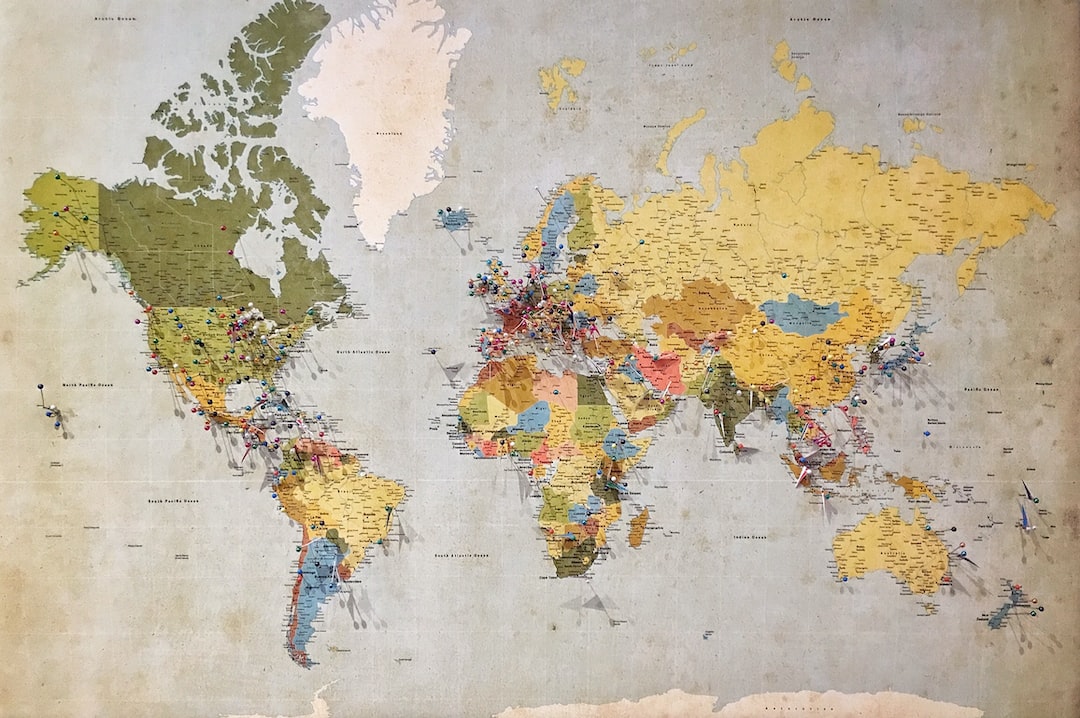So, you’re thinking about kicking off your own art and design biz? That’s the move! Whether you’re the next Basquiat, Annie Leibovitz, or you’re just itching to make some serious bank while doing what you love, now’s the time to start planning. Let’s be real, the creative industry is buzzing harder than ever, with mad opportunities waiting for those who got the skills, the drive, and the right plan—but yo, no cap, it’s not all sunshine and rainbows.
It takes mad hustle, patience, and learning how to navigate this wavy industry. What’s even better? You don’t need to do it alone. We’re here to guide you, fam, so you don’t have to make those same rookie mistakes others have made. Get ready to take notes because we’re about to dive headfirst into how you can start and grow your own art and design business like a straight-up boss.
Find Your Creative Niche
So, first things first. You’ve gotta lock down what makes you, you—what’s your ‘thang’? Trust, that’s your superpower. ✨ The internet’s overflowing with artists trying to make their mark, and it’s kinda easy to get lost in the sauce. Don’t be that person copying others just because it’s “trendy.”
Your niche is what sets you apart. What is it that keeps you up painting at 3 AM, or what doodles are always packed into your notebooks? Whether it’s edgy make-up art, hyper-realistic digital design, or miniatures (yes, they are totally a thing now), claim it as your own. Don’t be a ‘copycat.’ Go deep and figure out what you love. If you’re already passionate, you’re halfway there.
Locking down your niche is essential because it builds the foundation for your brand and lets people know, "Hey, I’m the go-to if you’re looking for X." You don’t need to box yourself in. You can be flexible, but set those boundaries. When peeps think of your niche, they should immediately think of you, like how Pokémon fans think of Pikachu.
Build Your Brand Identity
So, you’ve got your niche. Lucky for you, brand-building comes next, and it’s as much an art as your actual art. 🎨 Your brand isn’t just a logo or a cute website; it’s the vibe, the feelings your work evokes, the story you share. It’s how people experience you and your art.
Start with your brand aesthetics. Is it bold and loud, or is it minimal and sleek? Think colors, fonts, hashtags—yes, even hashtags—because your visuals need to be on point. Make sure whatever you choose rolls with your style and essence. Think carefully about how your brand will unfold across different platforms—from Instagram grids to business cards.
Next up is your brand voice. How will you communicate with your audience? Are you keeping it professional or more chill and relatable like we’re doing now? Maybe you’re funny AF or deep AF; either way, make sure it resonates with your target audience. Remember, consistency is key. If you’re talking to your followers on the ‘gram like they’re your besties, keep that same energy everywhere—email blasts, your website, all of it.
Finally, there’s your mission. What drives your creative hustle? Is it self-expression? Social justice? Something bigger? Your mission needs to be woven into your art and business values. When the brand and mission are fully aligned, you’ll naturally attract a tribe who get it and resonate with what you do. And trust, having those high-vibing peeps hyping you up is everything.
Secure the 💰 Bag
Alright, so you’ve got your niche and brand identity locked down. Now, let’s talk cash. Yup, I’m gonna say it—creatives gotta eat too. Making bank is CRUCIAL if you want to keep your art and design business afloat, and tbh, it’s not as tough as you think if you’ve got the right mindset.
Pricing Your Work: This is where many creatives trip up. Don’t undersell yourself. If you started low when learning the ropes, that’s okay, but it’s time to up your game. Consider factors like materials, time invested, and your experience, legit. Don’t forget moo-la for handling business expenses, like software subscriptions and studio rentals—these add up quick. You can even check out what other artists with similar skills and rep are charging, then price your work competitively (but fairly).
Multiple Income Streams: Don’t put all your eggs in one basket—diversify your cash flow. Selling original pieces? Lit. But also, think beyond the canvas. Prints, merch, digital downloads, workshops, Patreon accounts—there’s a wealth of options out there. The world runs on digital now, and with that comes endless opportunities to reach a global audience. Plus, multiple streams of income are like a safety net for when one avenue dries up.
Side Hustles: If your art biz is just getting off the ground, don’t shy away from side gigs. Teaching art classes, freelancing for design projects, or even a part-time barista job to cover those bills while you’re waiting for a steady cash flow can be clutch. Side hustles give your art biz some breathing room to grow without the overwhelming financial pressure.
Mastering Marketing Skills
Think of marketing as the bridge connecting your art to your audience. You can have the dopest designs, but if no one’s seeing them, ya might as well be doodling in your diary. The hustle starts here. 🚀 Let’s break down some essential skills you need to master.
Social Media Game: If you’re not on social media, you’re basically off the map. Get on it and start with the big leagues—Instagram, TikTok, Pinterest. IG’s a must for the visual crowd, and TikTok’s algorithm has that viral potential. Post consistently and share everything: your process, finished work, behind-the-scenes moments, stories. Engage with your audience like they’re your peeps. Respond to comments, ask questions, create polls. Utilize hashtags wisely—don’t spam them, but also don’t sleep on them.
Content Creation: Your social media game gets exponentially stronger when you’re on top of content creation. Videos, tutorials, time-lapses, live demos—this is the age of content-hungry platforms. Figure out what kinda content vibes with your audience and run with it. And pro tip: use a content calendar to stay consistent—nothing’s worse than ghosting your followers only to come back months later like, "Hey, I’m back!"
Email Marketing: Think email’s dead? Think again. Start a newsletter to connect on an even deeper level. Drop tips, exclusive offers, or news about your latest projects. Good emails feel like letters from a bestie who’s always in the know. Your most loyal fans will love these—and they’re the ones likely to buy your art again and again. Plus, email’s where you talk directly to your audience without fighting algorithms.
SEO Basics: Search Engine Optimization (aka SEO) is what helps your website or online shop pop up when people are Googling for art or design. Simple things like using keywords, blogging, and having an easy-to-navigate site layout make a huge impact. You don’t need to hire an expert to grasp the basics; online SEO courses are your new BFF.
Having your marketing on lock is one of the biggest things that’ll set you apart from other creators who are just waiting for opportunities to knock on their door. Stay active, stay engaged, and most importantly, have mad fun with it.
Digital Presence is 🔑
This one’s for posterity, fam. You’ve got the brand; now build the house. Your website should be the home base where people can find ALL the deets about you—easy like Sunday morning. Here’s why this step is an absolute must if you want to level up.
Portfolio Website: Nothing screams pro like a clean, easy-to-navigate portfolio. Whether you’re a designer, painter, or digital artist, people wanna see your best work front and center. Make sure it loads fast and looks good on mobile because let’s be real—most people are gonna check it while scrolling on their phones. Showcase the best of the best. You don’t have to include every single thing you’ve done. Quality over quantity all day. You can build it on platforms like Squarespace, Wix, or WordPress—just make sure it’s YOU.
E-Commerce Integration: Turn your website into an online store, because why not make bank while you sleep? Most portfolio sites come with e-commerce tools, or you could add a third-party service like Shopify. Make the shopping experience seamless—easy checkout, multiple payment options, fast shipping. People have short attention spans; if it’s complicated, they’ll bounce.
About Me Page: Hit ‘em with your story. Who are you? Why do you create? Get deep or keep it light, but make it memorable and authentic. Potential clients and buyers wanna connect with the person behind the art. Your "About Me" page is prime real estate for that. Include a professional headshot (or a dope candid) and write in a way that matches your brand voice.
Blog/News Section: Adding a blog or news section keeps your site active, boosts SEO, and lets you share more about your journey, thoughts, or industry trends. It can also be repurposed in your email newsletters and social media content. Multi-tasking for the win! Consistent posting helps you stay top of mind and show off that you’re always up to something new.
Contact Information: Make it super easy for peeps to hit you up. Drop a contact form, link your socials, and provide all the relevant contact deets on your "Contact" page. You’d be surprised how often folks leave because they can’t figure out how to get in touch. Don’t let that be you. 💬
Balancing Business and Creativity
Now that you’ve got the biz side nearly down, what about keeping that creative flame lit? Starting and growing an art and design business comes with challenges like burnout, stress, or getting into a rut when the hustle begins to feel more like work and less like passion. Time to balance that headspace, so the hustle doesn’t snuff out your vibe.
Scheduling “Me Time”: Whether you’re working solo or juggling side gigs, make sure to carve out "me time." Sketch something random with no intent to sell, binge-watch your favorite Netflix series, or chill with your pals. Creativity needs room to breathe. If your schedule’s packed tighter than a concert pit, you gotta prioritize unwinding, so your muse doesn’t dip out on you.
Setting Boundaries: Set time limits and be fierce about protecting them. Remember, not every opportunity that comes your way is the opportunity. Practice saying "no" when the project doesn’t vibe with your passion or values. That way, when that lit opportunity comes knocking, you’ll have the bandwidth to lock it in.
Revamping Your Space: Your environment matters. Whether it’s a corner of your bedroom or a whole studio, find a setup that sparks joy and productivity. Switch things up—change the art on your walls, add plants, dim the lights. Create a space that’s inspiring and helps you stay in the zone. When you love where you create, your output will show it.
Joining a Creative Community: Don’t isolate yourself in a bubble of creativity. Get out and connect with like-minded souls—digital or IRL. Join forums, discord groups, and local art collectives. Not only does it push your creative boundaries, but it also lands you in the same circles as potential clients, collaborators, or even just cool peeps who can relate.
Harness the Power of Collaboration
Collabs are 🔥! Every creative out there can benefit from collaboration—it’s like hitting the refresh button and leveling up all at once. Plus, collabs expand your audience, open doors to new opportunities, and often lead to something magical you couldn’t create alone.
Finding Good Partners: Look for people in your niche who complement your style. If you’re a graphic designer, maybe reach out to a writer for zine collabs or a photographer for some dope mixed media work. Vibe-check is crucial—don’t waste time on projects where you and the other person aren’t on the same wavelength.
Setting Expectations: Make sure everybody is on the same page—type it out, talk it through, whatever works for you. Define roles, deadlines, and compensation (if any). Be upfront, especially about work ownership and how the final product gets used. This way, everyone is clear on what to expect, avoiding potential drama down the road.
Sharing the Work: Collaboration should be a 50/50 shuffle. Make sure the work you’re putting in is equally matched by your partner. It can be tempting to carry the weight if someone is slacking, but that’s a quick way to burnout city. Set clear boundaries, communicate openly, and always aim for that 50/50 split.
Marketing Together: Use both of your platforms to promote the collab equally. Cross-promote on Insta, TikTok, your blogs; wherever you share content, make sure your partner shares it there too. The goal? Each of you taps into a fresh audience, gaining new followers, fans, or whatever you’re aiming for. A collab is only worthwhile when it’s a win-win. 🎉
Level Up Your Skills Constantly
Yep, there’s always room for growth. To keep your art and design business thriving, you need to be more than a skilled artist—you’ve gotta stay ahead of trends, new techniques, and industry shifts. The art world is always evolving, and so should you.
Workshops and Courses: Hop on online platforms like Skillshare, Coursera, or Masterclass and invest in self-improvement. Not just the stuff you’re good at either—challenge yourself to pick up new tools to add to your creative arsenal. You’re never too experienced to learn something new.
Mentorships: Find a mentor who’s where you want to be or even an industry peer with loads of experience. Learning from someone who’s been through it all is like a cheat code for leveling up faster. And the best mentors don’t just teach; they challenge you to push past your comfort zone.
Experimentation: Don’t pigeonhole yourself into one style or medium. Experimenting can be a game-changer, even if you’re exploring digital apps when you’ve been oil-painting forever. Every new skill or discovery only adds to your creative toolkit and broadens your scope to potentially new clients or markets.
Keeping Up with Trends: Be a trend hawk—not to follow them blindly but to understand what’s poppin’. This is especially crucial if you design for a younger market that lives and breathes whatever’s fire in the moment. However, don’t lose yourself chasing trends, but do incorporate and remix them into something that still reflects you.
Portfolio Refresh: Constantly updating your portfolio to reflect your growth is a must. Keep it fresh. Weed out outdated projects that no longer show your current level; highlight those that reflect where you’re headed artistically. This is how you communicate to potential clients that you’re always evolving, always on top.
Navigating the Legal and Business Stuff
If you want to get real about that full-time art and design hustle, you’ve gotta tackle the legal and business sides too. Yeah, it sounds boring, but trust me, this stuff is crucial. Otherwise, it’s game over before you even begin.
Register Your Business: Step one, you’re gonna need to make your biz official. That could mean becoming a sole proprietor or setting up an LLC. Research what’s best for you, based on your state laws, liability, and future plans. It might sound intimidating, but setting up a legal entity will protect you and your assets.
Taxes and Financing: Taxes? Yeah, you gotta deal with them ASAP. Set up a separate business bank account and keep impeccable records of income and expenses—apps like QuickBooks or Wave can help with keeping everything organized. Consider hiring a tax pro – it’s a small price to pay for peace of mind.
Contracts: Never—never—work without a contract. Verbal agreements might seem chill when you’re starting, but they’re a disaster waiting to happen. Have a basic contract template ready to go for all your projects outlining scope, payment terms, deadlines, and any other essential deets. Tailor it to each job, and don’t be shy about talking terms early on with clients.
Intellectual Property: Know your rights when it comes to intellectual property. Everything you create is your IP automatically, but licensing agreements can allow clients to legally use your work without transferring ownership. There are countless instances of artists getting ripped off on this front, so level up your knowledge in this department, fam.
Pushing Through When It Gets Tough
Let’s be real—starting and growing your own business isn’t always a walk in the park. There’ll be setbacks, just like any other journey. But if you’re prepared, you won’t just get through them; you’ll bounce back stronger. 💪
Overcoming Rejection: For anyone putting their art out there, rejection is inevitable. It stings, but don’t let it hit different. Every “no” is just one step closer to that “yes” that changes everything. Use rejection as fuel. Learn from it, refine your approach, and keep pushing forward.
Handling Creative Blocks: Creativity is a beast. Sometimes it calcifies, and nothing seems to flow. When that happens, don’t force it. Pause, switch gears, or even take a mini-break. Go for walks, soak in different surroundings, or dive back into hobbies you didn’t have time for before. The key is to let inspiration come naturally again.
Managing Finances in Dry Spells: When income isn’t as steady as you’d like, don’t panic—plan. Save during those highs to cover your lows. And again, diversify your income streams as we mentioned earlier. Picking up a side gig temporarily isn’t a step back, just a pivot until you’re steady on your feet again.
Finding Motivation: It’s easy to lose motivation when you’re not seeing the growth you hoped for right away. But consistency is the unsung hero of success. Sketch, design, create something (anything) on the regular—even if you’re just toying around with ideas. Pushing yourself to keep going even when it’s tough is sometimes all it takes to keep the momentum alive.
FAQ Section 🤔
Okay, we’ve spilled the tea on what it takes to get that art and design biz poppin’. But you might still have some questions floating around. No worries—we’ve got you covered with a quick FAQ to tie it all together.
What should I do if I feel like giving up?
Don’t! 🧠 Take a step back and reevaluate why you started. Sometimes we lose sight of the original dream when the grind gets rough. Journaling or talking things through with a mentor can help you rediscover that spark. Taking a short break can also reset your creative energy if you’re feeling burnt out. Remember, persistence is key.
How do I balance originality with industry trends?
Balancing originality with trends is all about interpretation. Don’t feel like you have to follow every trend just because it’s popular. Instead, see how a trend can blend with your unique style. Ultimately, the goal is to stay authentically you while still being relevant. 💯
Should I invest in art school or learn as I go?
Both have their perks. If you’re someone who thrives in structured learning environments and can afford it, art school can offer valuable networking opportunities and technical knowledge. But let’s be real—experience, self-taught grinding, and hustle can take you just as far, especially in today’s world where so much info is available online for free.
How do I deal with self-doubt?
We all deal with it; the key is not to let it cripple you. Use doubt as fuel to improve, not as a reason to quit. Surround yourself with a positive support system, whether that’s family, friends, or an online community. And keep creating, even when you’re unsure. Confidence builds over time and with experience.
When should I start outsourcing tasks?
When your biz begins to pick up and you find yourself stretched thin, it might be time to outsource. Whether it’s handling social media, admin tasks, or even producing merch, it’s okay to pass off responsibilities to keep your focus on what only you can do—the art.
References and Sources
- Brown, A. (2022). Navigating the Business Side of Art: How to Make a Living. Independent Creative Journal.
- Collins, D. (2021). The Importance of Brand Consistency. Entrepreneur Creatives.
- Smith, L. (2020). Mastering the Basics of Art Marketing. Art Business Today.
- Parker, T. (2019). The Balancing Act: Managing Your Creative Energy. Design Horizons.
Boom, there you have it—the full blueprint for getting your art and design biz off the ground, staying on top of your game, and reeling in the success that comes with it. Get hype, hustle hard, and don’t forget to enjoy the journey. 🚀




